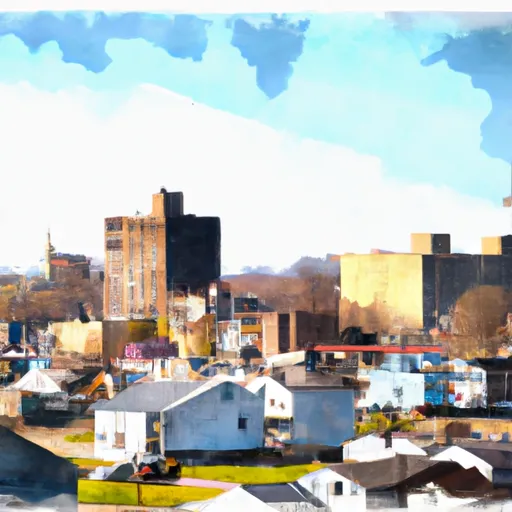-
 Snoflo Premium
Snoflo Premium
Get unlimited access to all our content
With no Ad interruptions! - Start Your Free Trial Login with existing account
Norristown
Eden Index
Climate
9.6
•
Recreation
6.4
•
Community
4.4
•
Safeguard
7.2/10

Norristown, Pennsylvania, experiences a humid continental climate with four distinct seasons. Summers are warm and humid, with average temperatures ranging from the high 70s to low 80s Fahrenheit. Winters are cold, with average temperatures in the mid-30s to low 40s Fahrenheit. Precipitation is evenly distributed throughout the year, with snowfall occurring during winter months.
Norristown is situated along the Schuylkill River, offering hydrology enthusiasts various opportunities for outdoor activities. The river provides a picturesque backdrop for boating, kayaking, and fishing. Additionally, Norristown is surrounded by several parks and green spaces, including the Norristown Farm Park, where visitors can explore hiking trails, picnic areas, and bird-watching opportunities. The Perkiomen Trail, a 20-mile multi-use trail, is also nearby, offering opportunities for walking, biking, and horseback riding.
What is the Eden Index?
The Snoflo Eden Index serves as a comprehensive rating system for regions, evaluating their desirability through a holistic assessment of climate health, outdoor recreation opportunities, and natural disaster risk, acknowledging the profound impact of these factors on livability and well-being.
Climate Health Indicator (CHI): 9.6
Norristown receives approximately
1228mm of rain per year,
with humidity levels near 76%
and air temperatures averaging around
12°C.
Norristown has a plant hardyness factor of
7, meaning
plants and agriculture in this region tend to thrive during the non-winter months.
By considering the ideal temperature range, reliable water supplies, clean air, and stable seasonal rain or snowpacks, the Climate Health Indicator (CHI) underscores the significance of a healthy climate as the foundation for quality living.
A healthy climate is paramount for ensuring a high quality of life and livability in a region, fostering both physical well-being and environmental harmony. This can be characterized by ideal temperatures, reliable access to water supplies, clean air, and consistent seasonal rain or snowpacks.
Weather Forecast
Streamflow Conditions
Lower Delaware
Area Rivers
Lower Delaware
Snowpack Depths
Lower Delaware
Reservoir Storage Capacity
Lower Delaware
Groundwater Levels
Recreational Opportunity Index (ROI): 6.4
The Recreational Opportunity Index (ROI) recognizes the value of outdoor recreational options, such as parks, hiking trails, camping sites, and fishing spots, while acknowledging that climate plays a pivotal role in ensuring the comfort and consistency of these experiences.
Access to outdoor recreational opportunities, encompassing activities such as parks, hiking, camping, and fishing, is crucial for overall well-being, and the climate plays a pivotal role in enabling and enhancing these experiences, ensuring that individuals can engage in nature-based activities comfortably and consistently.
Camping Areas
| Campground | Campsites | Reservations | Toilets | Showers | Elevation |
|---|---|---|---|---|---|
| Lake Towhee County Park | None | 509 ft | |||
| Parvin State Park | 55 | 72 ft |
Nearby Fishing
Nearby Ski Areas
Catastrophe Safeguard Index (CSI):
The Catastrophe Safeguard Index (CSI) recognizes that natural disaster risk, encompassing floods, fires, hurricanes, and tornadoes, can drastically affect safety and the overall appeal of an area.
The level of natural disaster risk in a region significantly affects safety and the overall livability, with climate change amplifying these risks by potentially increasing the frequency and intensity of events like floods, fires, hurricanes, and tornadoes, thereby posing substantial challenges to community resilience and well-being.
Community Resilience Indicator (CRI): 4.4
The Community Resilience Indicator (CRI) recognizes that education, healthcare, and socioeconomics are crucial to the well-being of a region. The CRI acknowledges the profound impact of these elements on residents' overall quality of life. By evaluating educational resources, healthcare accessibility, and economic inclusivity, the index captures the essential aspects that contribute to a thriving community, fostering resident satisfaction, equity, and social cohesion.

